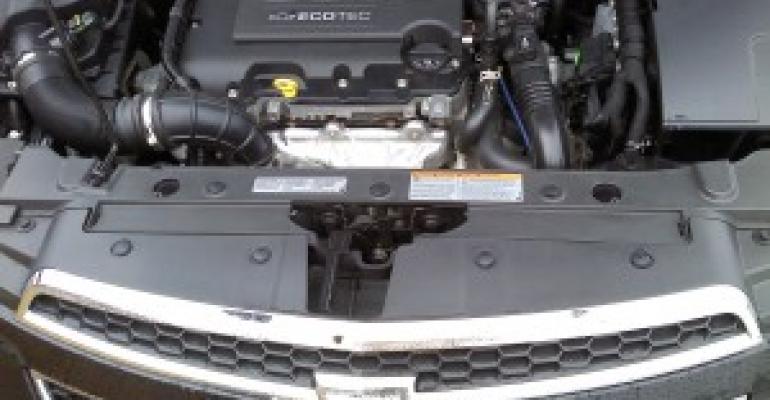Bloggers who can write what they want without a watchful eye of an editor – or better yet, a team of editors – can find themselves in trouble with the truth squad.
I learned that first-hand.
[caption id="attachment_213" align="alignleft" width="300" caption="Chevy Cruze Eco's 1.4L turbocharged 4-cyl."] [/caption]
[/caption]
Several weeks ago, I posted a blog about my evaluation of the Chevrolet Cruze Eco to see if it truly is capable of 42 mpg (5.6 L/100 km) on the highway. I was driving to northern Michigan and knew this would be a good test.
On the way there, according to the trip computer, I never saw 39 mpg (6 L/100 km). I reset the trip computer and rolled into Detroit with a 44.6- mpg (5.3 L/100 km) fuel-economy readout.
Not content to leave the reporting trail, I decided to calculate the fuel economy the old-fashion way, partly due to a healthy dose of skepticism I’ve heard over the years about on-board mileage calculators.
It was a good idea to gather more information, but poorly executed, I realize now, thanks to several readers who questioned my math skills, which found the Cruze Eco falling well short of 42 mpg.
My mistake was dividing miles driven by the capacity of the fuel tank, rather than the exact amount of fuel consumed. Problem is, that information was not available, no matter how many fueling receipts I studied.
I got the car with a quarter-tank of gas. I drove it until there was less than an eighth of a tank and decided I should fill up, partially because I was getting into northern Michigan where gas stations are harder to find.
I took the conservative route and fueled up when I came to the next station. I suppose I could have depleted the tank, filling it only when the light went on.
I could have run it on fumes if I were in a more populated area, where a station could be located in a pinch.
Admittedly, that’s more risky, but I would have been able to top off the tank and know exactly how much fuel it takes on a warm day in late June. The hotter the weather, the higher the pressure in the fuel tank, meaning less gasoline will fit, so your mileage will vary.
One reader commented that on-board mileage calculators have gotten more accurate over the years, and that their numbers should not be dismissed.
That got me thinking of the many V-6s and V-8s I’ve driven that delivered lackluster mileage, according to the trip computers.
If the suspicion is that OEMs “game” the devices for more attractive numbers, well, I’ve seen an awful lot of evidence to the contrary.
The moral of the story: A 7-day loan is hardly sufficient for calculating mileage the old-school way with any reasonable degree of accuracy, unless the vehicle is sure to log a lot of miles and copious records have been and will be kept about fueling and miles driven, even before the 7-day loan begins.
I had a ’96 Nissan Maxima that didn’t have an MPG calculator, so I figured it “old-school” for the past several years, meticulously recording data from each fuel-up.
Every six months I’d check the numbers and they always came up the same, around 22.5 mpg (10.4 L/100 km).
This is the ideal way to calculate fuel economy, with several repeated cycles of filling and depleting the tank. Another bonus: With enough data, the calculation can be done without risking that you might run out of fuel.
But in the case of the Cruze Eco, I tried to measure something without the necessary tools or data, and in retrospect I probably should have left well enough alone, or made arrangements for a longer loan.
Live and learn.





